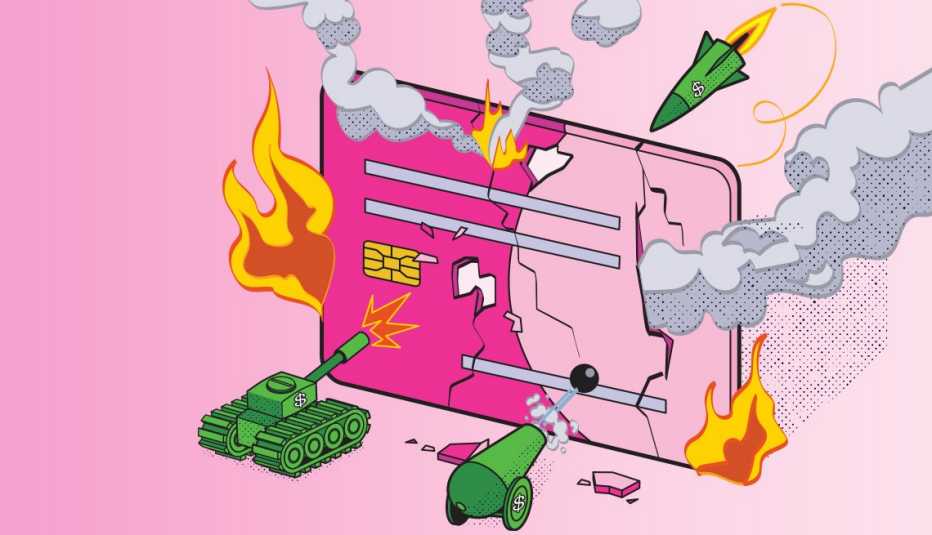AARP Hearing Center


Nearly half of Americans ages 50 and older who carry credit card debt use credit cards to pay for basic living expenses that they don't have enough cash to cover, according to a new AARP survey. The research also found that 48 percent of older adults who carry a balance from month to month owe $5,000 or more, and 28 carry a balance of $10,000 or more.
If you’ve run into trouble, you can choose a strategy to pay off your cards that fits your personality and situation best. First, you need to set up a simple budget that keeps you on track but leaves room to live your life. “Self-deprivation is not an effective budgeting strategy,” says Bruce McClary, spokesperson for the National Foundation for Credit Counseling.
Once you’ve calculated how much you can put toward credit card payments each month, list each one of your cards, its balance and its interest, or annual percentage rate (APR). “Writing down your debts is freeing,” says Cynthia Flannigan, director of financial planning at MainStreet Financial Planning in Los Gatos, California. “It’s no longer a nebulous, overwhelming amount, but one you have checked and can plan to pay off.” For purposes of illustration, let’s assume you have $200 monthly to spend on the following debts:
- $2,000 balance, 16 percent APR, minimum payment: $40
- $3,000 balance, 20 percent APR, minimum payment: $60
- $1,500 balance, 18 percent APR, minimum payment: $30
The next step is to set up automatic payments to cover the minimum owed monthly on all but one card. On that last card, you’ll pay more than the minimum. Here are four ways to go about it.
The avalanche
How it works: You pay off your cards by putting extra money toward the card charging the highest interest rate first. Once that’s paid off, you tackle the card with the next-highest rate.
The math: Paying the minimum on the two lowest-rate cards, you pay the other $130 in your $200-a-month repayment budget toward the card with the 20 percent APR. Once that is paid off, you focus on the 18 percent APR card. When that debt is gone, you pay the full $200 toward the last card. Once you’re through, you’ve paid a total of $2,445 in interest.
Consider it if … you want to pay the least possible interest, says Michelle Jones, chief external affairs officer at Money Management International. This also makes sense if your cards have vastly different interest rates.
Avoid it if … you have a lot of debts. It may be easier to pay off the smallest balances first so you have fewer cards to manage.
The snowball
How it works: You pay off your smallest debt first, moving on to the next smallest, thus rewarding yourself with quick wins.
The math: You begin by paying $100 each month toward your $1,500 balance—the smallest of the three—and paying the remaining $100 to cover the minimum payments on the two other balances. When that first debt is paid off, you focus on the next smallest, and so on. Your total interest payment over time: $2,625.



































































More From AARP
Heavy Medical Debt? Here's How To Dig Out
Don't let medical debt make your budget sick
Mortgage Loans Harder to Get as You Age
Lenders may not recognize an older borrower’s income sources
Drowning In Credit Card Debt?
Try a zero-interest balance transfer